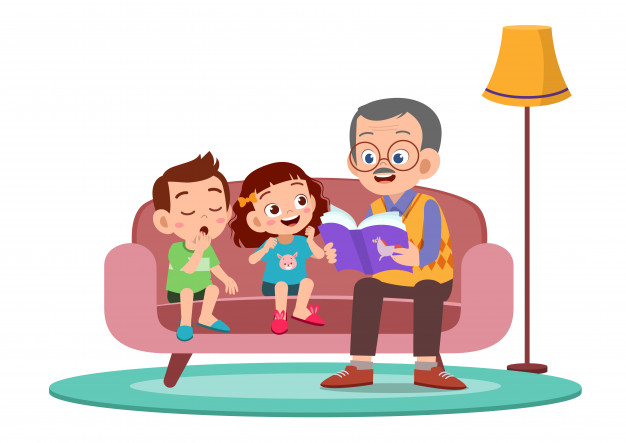If you want your children to be smart, tell them stories; If you want your children to be brilliant, tell them even more stories.
– Wrote a famous person who needs no introduction ; Albert Einstein
Introduction
Stories are one of the most powerful tools you can use to engage and connect with your children.
Is your child bored sitting at home? Tell them a story and they’ll be entertained!
Is your child not eating food ? Tell them a story and they will!
Want to calm your child during a tantrum? Tell them a story and it’ll do the magic!
And while there’s little doubt over storytelling being the most effective medium of communication with kids, what’s true is that kids are also the best storytellers around.
Some Benefits of storytelling:
Story Telling has a lasting and wide-ranging benefits on early childhood development like:
– Language development including Vocabulary, Grammar and Pronunciation
– Improvement in child’s concentration and listening skills at an early age.
– Foster a stronger sense of cultural identity and an understanding of our rich heritage
– Effective story telling can help stimulate curiosity and spark a child’s imagination.
– Most importantly, it will also help inculcate a few virtues like courage, wisdom, honesty, empathy, etc in your child and have fun at the same time.
How can you make story telling interesting for your children?
Storytelling is an interactive and fun way to spend quality time with your kids which will strengthen the bond you have with them.
Here are a few ways how you can make storytelling even more interesting for kids:
1. Select ‘Good’ Stories:
First and foremost, expose our kids to a wide range of stories, instead of sticking to just one genre. Eg. Simple stories (like Panchatantra), Folktales (like Jataka Tales), Songs, Mythological tales and Epics (like Mahabharat and Ramayan)
2. Voice Modulation:
Kids are naturally sensitive to emotions. So, while narrating a story, add a bit of drama. Proper voice modulation ( i.e. increasing, lowering it, pausing for a second or even squeaking your voice and making funny noise) while narrating a story will automatically engage the young listener.
3. Make a Proper Introduction:
Instead of straightaway starting the story, discuss about relevant incidents that will happen in the story. For example: If you are narrating the Goldilocks story, you may talk to your kids about ‘porridge’ or ‘bear’ or maybe ‘curly, golden hair’.
4. Maintain Eye Contact:
Very very important. When you plan to tell a story to your child, make sure that the child doesn’t get bored or lose interest in listening to your story. So, make frequent eye contact with your little listeners.
5. Let them Choose their own Story:
Let your kiddos choose their own story. When the child knows that he is going to hear a story that he has picked, naturally he is interested in listening to it more than ever!
6. Props, Props, Props!
Use of flash cards, puppets, etc can add a zing to the story. Props like hand puppets also enhance a child’s story experience. In fact, with these in place, the little ones take more interest in retelling the stories that they hear.
The Irony:
Storytelling with kids is a great way to build imagination or to bond at bedtime. Unfortunately today, Parents today, find it easier to put their child to bed with their favourite cartoon channels or hand over to them a gadget to fiddle with rather than reading bedtime stories to them.
Proeves is happy to launch ‘The Learning Lab’ which hosts a ton of resources and activities to homeschool your little one during the covid crisis!
We also have the best homeschooling Mom experts to guide you through the journey of homeschooling. Visit www.proeves.com/learninglab.php to have a glimpse of our “Learning Lab”.

